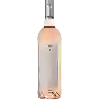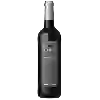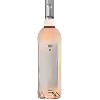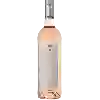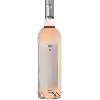
Domaine de la VallongueLovely Rosé
This wine is a blend of 2 varietals which are the Cabernet-Sauvignon and the Counoise.
This wine generally goes well with poultry, beef or lamb.
Food and wine pairings with Lovely Rosé
Pairings that work perfectly with Lovely Rosé
Original food and wine pairings with Lovely Rosé
The Lovely Rosé of Domaine de la Vallongue matches generally quite well with dishes of shellfish, appetizers and snacks or lean fish such as recipes of chicken and shrimp jambalaya, preparation of the olives (black olives in brine) or brazilian moqueca.
Details and technical informations about Domaine de la Vallongue's Lovely Rosé.
Discover the grape variety: Cabernet-Sauvignon
Cabernet-Sauvignon noir is a grape variety that originated in France (Bordeaux). It produces a variety of grape specially used for wine making. It is rare to find this grape to eat on our tables. This variety of grape is characterized by small bunches, and small grapes. Cabernet-Sauvignon noir can be found in many vineyards: South-West, Loire Valley, Languedoc & Roussillon, Cognac, Bordeaux, Armagnac, Rhone Valley, Provence & Corsica, Savoie & Bugey, Beaujolais.
Informations about the Domaine de la Vallongue
The Domaine de la Vallongue is one of of the world's great estates. It offers 16 wines for sale in the of Alpilles to come and discover on site or to buy online.
The wine region of Alpilles
The wine region of Alpilles is located in the region of Méditerranée of Vin de Pays of France. Wineries and vineyards like the Domaine de Trévallon or the Domaine de Trévallon produce mainly wines red, pink and white. The most planted grape varieties in the region of Alpilles are Merlot, Cabernet-Sauvignon and Roussanne, they are then used in wines in blends or as a single variety. On the nose of Alpilles often reveals types of flavors of peach, black fruits or white pepper and sometimes also flavors of cassis, clove or mushroom.
The wine region of Vin de Pays
Vin de Pays (VDP), the French national equivalent of PGI (Protected Geographical Indication) at the European level, is a quality category of French wines, positioned between Vin de Table (VDT) and Appellation d'Origine Contrôlée (AOC). This layer of the French appellation system was initially introduced in September 1968 by the INAO, the official appellation authority. It underwent several early revisions in the 1970s, followed by substantial changes in September 2000 and again in 2009, when all existing VDT titles were automatically registered with the European Union as PGI. Producers retain the choice of using either the VDP or PGI titles on their labels, or both - in the form "IGP-Vin de Pays".
News related to this wine
My life and job as a personal wine consultant
Tongue firmly in cheek, I sometimes define ‘wine consultant’ as ‘someone lacking employment who will work for whoever pays them’. Although meant in jest, the implied question is valid: just what does a wine consultant do? More importantly, in this age, when every assistant in a retail shop styles him- or herself a sales consultant, who would hire one? The short answer is this: a wine consultant is someone who advises wine lovers about their passion. He or she advises buyers on what to buy (and a ...
Andrew Jefford: ‘Drinking cheap wine need not be a cheap experience’
Annual domestic gas bills in the UK threaten to rival, in craziness, the price of a box of Bordeaux first growths. Those energy costs have sent the price of almost everything else ripping up after them. Is there, um, anything to be said for cheap wine? There is. First, though, we must sip the bitter harvest of alcohol taxes. These are high in the UK and higher still in Scandinavia, Australia, New Zealand and India; they tend to vary by state in the US and by province in Canada, and in general th ...
Long Read: Biodiversity in the vineyard – looking to the future
It’s no secret that climate change is breaking records for heatwaves, frosts, fires, droughts, hail and wildfires. Their increasing frequency has left the wine world awash with initiatives, conferences, and research all concerning sustainable viticulture and its many facets: biodiversity, regenerative agriculture and the host of organic, biodynamic and sustainable labels or certifications they embody. More than simple posturing, many are concerned with the very real practicalities of saving wate ...
The word of the wine: Castle
A term often used to designate wineries, even if they do not have a real castle.






